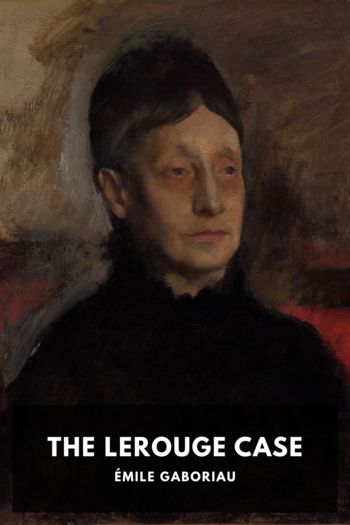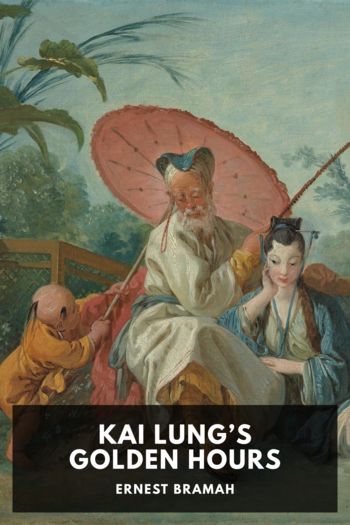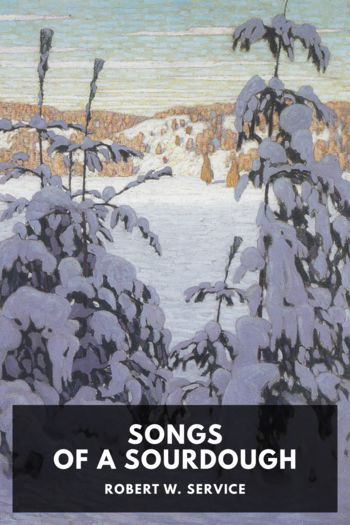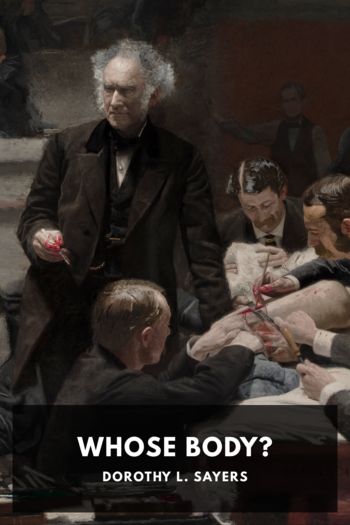Genre Other. Page - 295

Description
Considered by many to be the first detective novel, The Lerouge Case (aka The Widow Lerouge) introduces Monsieur Lecoq (later Inspector Lecoq), a former “habitual criminal” who becomes a police officer. Émile Gaboriau based Lecoq at least in part on an actual criminal-turned-police-officer, Eugène Vidocq, who went on to be the first director of the Sûreté. In this first book, Lecoq plays a relatively small part, the bulk of the mystery solving being done by Lecoq’s mentor Tabaret, an amateur detective.
Gaboriau thus introduces both a police detective and an amateur detective at the same time. Many of the attributes now taken for granted in the mystery arena originated with Gaboriau and Lecoq—hyper attention to detail, mastery of disguises, amateur “agents” who assist the detective, and the above-mentioned amateur detectives that assist and sometimes out-perform the police versions.
Gaboriau’s Lecoq novels were wildly successful until another amateur detective named Holmes made his appearance. Holmes even comments on Lecoq in A Study in Scarlet, dismissing him as a “miserable bungler” in response to Dr. Watson’s question. Nevertheless, Arthur Conan Doyle was obviously influenced by Gaboriau and Lecoq, as many of Holmes’ traits can be seen first in Lecoq.

Description
A murder is discovered. The authorities quickly arrest an obvious suspect. A detective spends hours at the scene in disguise before making himself known, and proceeds to minutely examine the evidence with the assistance of a doctor, among others, before proclaiming the answer lies in a completely different direction. One would be forgiven for thinking the detective must be a certain famous Englishman and his doctor companion.
But this detective is French rather than English, a professional working for the police rather than an amateur, and indulges in candy lozenges rather than cocaine. If there is a straight line between Poe’s Dupin and Doyle’s Holmes, then Gaboriau’s Lecoq lies right in the middle of it. He is a master of disguise, he is proud and sometimes arrogant, he notices infinitesimal things others do not, he makes great leaps in deduction while others are struggling to take small steps. He is both strikingly similar and distinctly different than his more famous English “cousin.”
Although Monsieur Lecoq appeared in Gaboriau’s first novel, there he played only a minor part. Here, he is the main attraction. Solving the murder of a countess and disappearance of a count requires all of Lecoq’s skills, and as he steadily unravels the mystery one sees the debt that is owed by all who came after him.

Description
Ernest Bramah’s Kai Lung stories are set in a fantastical ancient China and written with an oblique, ornate prose style that serves to mimic that of Chinese folk tales. The titular character is an itinerant storyteller and the books themselves are mostly collections of stories presented as if he were narrating.
Kai Lung’s Golden Hours, published in 1922, is the second of the Kai Lung books, and the first to have an overarching framing narrative and thus be published as a novel. In it we see Kai Lung brought before the court of the Mandarin Shan Tien, having been accused of treason by the Mandarin’s agent Ming-shu. Appealing to Shan Tien’s appreciation for refined narrative, Kai Lung tries to regain his freedom by spinning a series of beguiling tales filled with aphorisms and humorous understatement.

Description
Songs of a Sourdough is a collection of poems written in 1907 by Robert W. Service while he was working as a bank teller in Whitehorse, Yukon. The best-known poems are those describing life during the Klondike Gold Rush of the late 1890s, especially his ballads “The Shooting of Dan McGrew” and the “Cremation of Sam McGee.”
While some of Service’s work had previously appeared in newspapers and periodicals, Songs of a Sourdough was his first book. Publishers initially questioned the “moral tone” of the work with its bawdy poems depicting not just the hard lives and isolation of Yukon prospectors but also the drinking, gambling, and prostitution that was prevalent in Dawson City. However, despite these reservations, the book was an immediate success. In Canada, there were ten printings and more than 12,000 copies sold in the first year alone. Dozens of additional printings followed in subsequent years, including editions issued in Britain and the United States.

Description
Whose Body?, published in 1923, is the first in a long and very popular series of mystery novels written by Dorothy L. Sayers and featuring her aristocratic detective Lord Peter Wimsey.
In this novel we are introduced to Wimsey, his imperturbable and multi-skilled butler Bunter, and his close friend Charles Parker of Scotland Yard as they come together to investigate an extremely mysterious incident: the naked body of a man, wearing a golden pince-nez, has been discovered in the bath of a bewildered tenant of a flat in Battersea. There’s a good deal of humor in the book, carefully balanced against the grim reality of murder.
Whose Body? was well-received on first publication, and provided a basis for Sayer’s successful career as a novelist. In sum, she wrote some eleven Wimsey novels as well as several short stories featuring the characters. Nevertheless, it appears that she herself felt that her translation of Dante’s Divine Comedy was her greatest literary work.

Description
Sunshine Sketches of a Little Town is Stephen Leacock’s humourous and affectionate account of small-town life in the fictional town of Mariposa. Written in 1912, it is drawn from his experiences living in Orillia, Ontario.
The book is a series of funny and satirical anecdotes that illustrate the inner workings of life in Mariposa—from business to politics to steamboat disasters. The town is populated by many archetypal characters including the shrewd businessman Mr. Smith, the lovelorn bank teller Mr. Pupkin, and the mathematically challenged Rev. Mr. Drone.
During his lifetime, Stephen Leacock was very popular in much of the English-speaking world as a writer and humourist. Sunshine Sketches is considered one of his most notable and enduring works. In Canada, the Stephen Leacock Medal for Humour is named in his honour. The medal is an annual award for the best Canadian book of literary humour published in the previous year.

Description
Ethan Frome is a young man whose nascent ambitions were thwarted by illness and privation. Now his daily toils wring only the most meager living from his fading farm, and his marriage is as frigid as the winter that has beset his home in Starkfield, MA. Yet despite the swirling snows, a flame of passion sparked by the recent arrival of his wife’s cousin, Mattie Silver, burns desperately within him. How far will he go to pursue a forbidden love and the prospect of true happiness? What will be the cost?

Description
The Way We Live Now is Anthony Trollope’s longest novel, published in two volumes in 1875 after first appearing in serial form.
After an extended visit to Australia and New Zealand in 1872, Trollope was outraged on his return to England by a number of financial scandals, and was determined to expose the dishonesty, corruption, and greed they embodied. The Way We Live Now centers around a foreign businessman, Augustus Melmotte, who has come to prominence in London despite rumors about his past dealings on the Continent. He is immensely rich, and his daughter Marie is considered to be a desirable catch for several aristocratic young men in search of a fortune. Melmotte gains substantial influence because of his wealth. He rises in society and is even put up as a candidate for Parliament, despite a general feeling that he must be a fraudster and liar. A variety of sub-plots are woven around this central idea.
The Way We Live Now is generally considered to be one of Trollope’s best novels and is often included in lists of the best novels written in English.

Description
Roswitha, also known as Hrotsvitha of Gandersheim, was a tenth century German canoness, dramatist, and poet. A remarkable woman, she has been called the first Western playwright since antiquity as well as the first known woman playwright. She was inspired by the Roman comic playwright Terence, who wrote six farces filled with disguises, misunderstandings, and pagan debauchery. Upset by Terence’s immoral subject matter but also inspired by his well-crafted plays, Roswitha sought to “Christianize” his work by writing six plays of her own.
Roswitha wrote six dramas in Latin. Two are concerned with the conversation of nonbelievers (Gallicanus and Callimachus), two are concerned with the repentance of sinners (Abraham and Paphnutius), and two are concerned with the martyrdom of virgins (Dulcitus and Sapientia).
This edition, originally published in 1923, includes an introduction by Cardinal Francis Aidan Gasquet (an English Benedictine monk and scholar), a critical preface by the translator (Christopher St. John), and prefaces written by Roswitha herself.

Description
Kate Chopin’s most famous work nowadays is the novel The Awakening, but at the turn of the last century she was more famous for her short fiction, published in American magazines like the St. Louis Post-Dispatch, Youth’s Companion, and Vogue. A prolific writer, over the course of fourteen years she penned nearly a hundred stories, although many didn’t see publication until a new collection was released in 1963. The stories focus on life in 1890s Louisiana, a setting that she was living in as a resident of New Orleans and Natchitoches. They’re told from many different points of view, but always with empathy for the struggles, both big and small, of the protagonists.
This collection contains the forty-nine short stories of Kate Chopin verified to be in the U.S. public domain, including “Désirée’s Baby” and “The Dream of an Hour.” They’re presented in the order they were originally written.